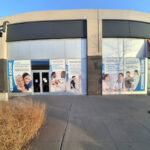Breast cancer does not just affect women: men can develop the disease, too. According to the Centers for Disease Control and Prevention (CDC), about one in every 100 breast cancer diagnoses in the United States is found in a male patient. Fortunately, early detection can make breast cancer easier to treat. Learn more in this blog post from the team at Richmond University Medical Center in Staten Island, NY.
What Is Breast Cancer?
Everyone is born with a small amount of breast tissue, regardless of their sex at birth. During puberty, women develop more tissue in their breasts; men do not. However, men still have the small amount of breast tissue with which they were born. Like women, men can develop breast cancer in the lobules or ducts. Types of breast cancer include:
- Ductal carcinoma in situ (DCIS)
- Invasive ductal carcinoma
- Invasive lobular carcinoma
As with other cancers, cells in the breast grow uncontrollably, and malignant cells can spread to other parts of the body. Among women, breast cancer is one of the most common types of cancer in the U.S.
Risk Factors for Breast Cancer
Male breast cancer is very uncommon in men under the age of 50 – most cases of breast cancer occur in older men. Other risk factors for male breast cancer are:
- A family history of breast cancer
- High estrogen levels, which can be caused by certain medications or conditions such as cirrhosis
- Testicular disease or surgery
- Klinefelter syndrome, which is a genetic condition in which a male is born with an extra X chromosome
- Genetic mutations, such as BRCA1 or BRCA2
While it may not be possible to prevent breast cancer, both male and female patients can lower their risk by maintaining a healthy, active lifestyle and avoiding excessive alcohol consumption.
How to Perform a Self-Exam
As with many other cancers, early detection is important. One of the best ways that both male and female patients can prevent breast cancer is through monthly self-examinations. When performing a breast self-exam, men should:
- Visually check each breast for changes in size, shape, and skin texture, such as puckering
- Lay their fingers flat against the breast and press down in a circular motion, starting at the outermost top edge of the breast and moving inward
- Feel for any unusual lumps or bumps
- Gently squeeze each nipple to check for discharge
Check one breast at a time. Use the left hand to check the right breast and vice versa.
Symptoms and Diagnosis
Self-examinations are not a substitute for seeing a physician. All patients should have a yearly checkup with their primary care physician, during which they can discuss any changes to their body or overall health. Symptoms of male breast cancer can include:
- One or more breast lumps: A painless lump in the breast or armpit may develop.
- Changes to the skin: Dimpled, puckered, red, or scaly skin may appear on the breast. Sometimes, patients see several dimples or divots that look like the skin of an orange.
- Pain:A patient may experience unusual pain or sensitivity in the breast area.
- Nipple changes or discharge: When a patient has breast cancer, their nipple may turn inward or release discharge.
If a patient is experiencing any of these symptoms, their physician will ask about any family history of cancer and perform a breast exam. They also may perform tests to take images of the breast and determine an accurate diagnosis:
- Mammogram
- Magnetic resonance imaging (MRI)
- Positron emission tomography (PET) scan
- Ultrasonography
In addition to imaging tests, the physician may take a biopsy of the patient’s breast tissue for lab testing. Breast cancer can be treated with surgery, chemotherapy, radiation, or a combination of these methods.
Find Expert Cancer Care at Richmond University Medical Center
At Richmond University Medical Center, we use state-of-the-art imaging technology to screen and diagnose patients for breast cancer. We provide several options for breast cancer treatment, including:
- Lumpectomy
- Nipple-sparing mastectomy
- Immediate reconstruction mastectomy
- Oncoplastic lumpectomy and mastectomy
With locations throughout Staten Island and a dedicated breast center, patients can find compassionate care from experienced, board-certified physicians. To learn more about our breast health services or to schedule an appointment, contact us today.




